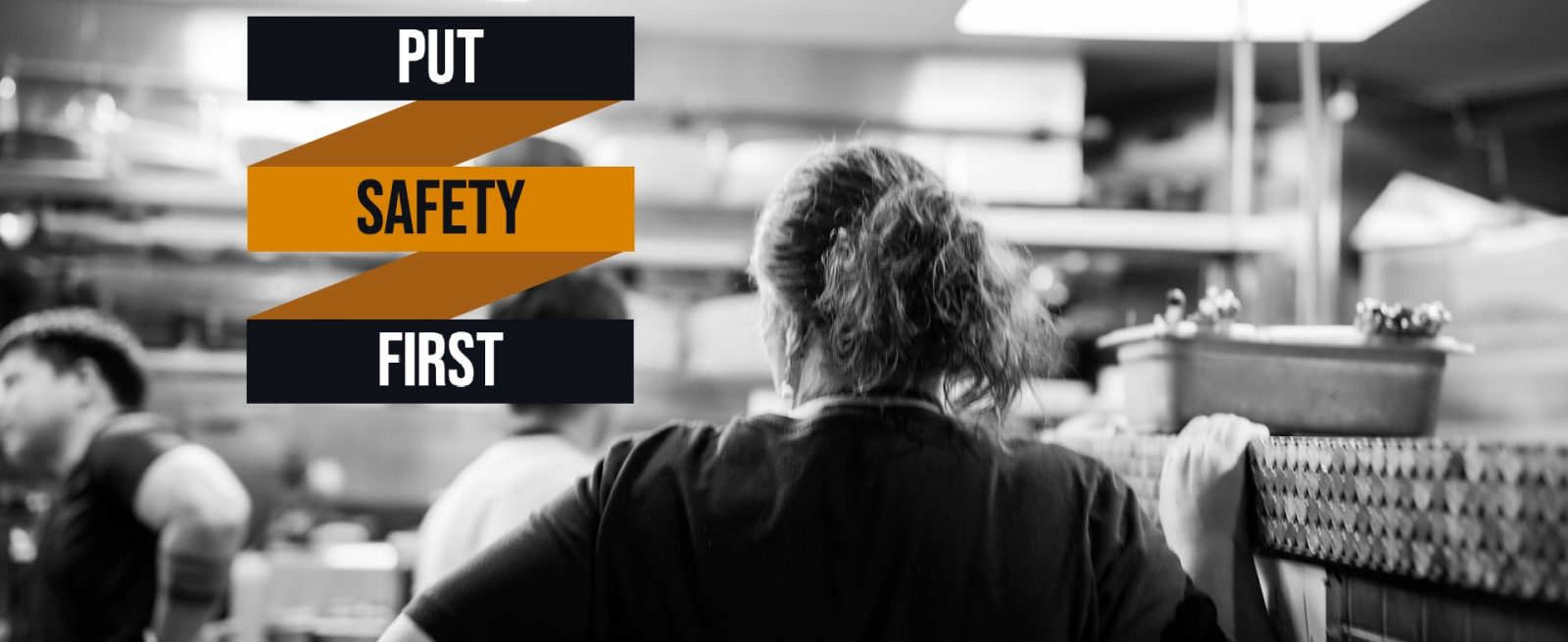Using Safety Incentive Programs to Improve Workplace Training
4 Min Read By Cindy Mielke
In multiple industries, employee safety can be a chief concern that requires careful consideration by employers. This can especially be the case in food service industries where employees are often in loud, busy environments while moving in and out of kitchen areas with any number of hazards.
The best way to mitigate the risks for employees and reduce workplace injuries is for businesses to establish comprehensive safety training programs.
Although establishing training sessions is critical for many restaurants, it’s not uncommon for many employees to overlook or undervalue the importance of safety briefings or certain procedures. This is where implementing a safety reward program can become a game changer.
Why Traditional Safety Training Is Sometimes Ineffective
Even though a restaurant may put its best effort forward when creating a safety program, they often face challenges when trying to achieve the desired level of employee engagement they need.
Several things can contribute to this scenario, including:
-
Repetitive or uninspiring content – Creating a safety briefing with long, in-depth instructions or manuals that need to be followed can often lead to boredom. This is especially the case if training takes place before a busy service. When this happens, it makes it difficult for employees to pay attention and get much value from their safety programs.
-
Too much information – Most people today have much shorter attention spans than in years past. Creating long, repetitive training sessions can quickly overwhelm employees with details, impacting their ability to retain crucial safety information and apply it when moving through hazardous areas of the restaurant.
-
Placing focus on compliance vs. safety – Although compliance is critical, sometimes restaurants can put too much emphasis on training employees about rules or penalties associated with their safety and their customers. However, this approach can potentially discourage employees from proactively identifying and addressing potential hazards and instead creates a culture of fear or blame regarding safety protocols.
-
Trying to use a one-size-fits-all approach – Generic training programs can often overlook the specific risks or challenges faced by front and back-of-house employees in a restaurant. A more effective approach involves customizing training programs to meet needs.
Why Are Incentive Programs Helpful for Safety Training?
Reward programs can be a great way to help boost employee engagement levels in all areas of the restaurant. When used to help improve safety awareness, these programs can be highly beneficial, offering tangible incentives to help positively reinforce certain actions.
The great thing about reward initiatives is that they are very adaptable and can be structured in a way that helps to improve employee focus and the amount of information they choose to retain. This can help them to adhere more closely to certain safety protocols and encourage more attendance at optional safety training briefings.
The overall effectiveness of reward programs involves the psychology of positive reinforcement. When employees become recognized and rewarded with things like gift cards or other incentives for taking specific actions, they are more likely to repeat those actions in the future.
Safety reward programs can lead to several positive outcomes for restaurants, such as
-
Reduced accidents and injuries in the restaurant
-
Better team morale
-
Higher customer satisfaction levels
-
Improved staff retention
By taking the time to invest in an effective safety reward program, companies can significantly lower the occurrence of workplace incidents.
Steps for Building a Great Safety Incentive Program
Before launching a safety reward program in your restaurant, there are important steps you should take to maximize its impact on employees:
1. Establish Clear Goals
Defining specific objectives for your safety reward program is important to help make sure it stays aligned with your overall business goals. For example, one of your objectives might be to try to reduce workplace injuries by 15 percent in a year or to achieve a minimum of 90-percent pass rate on all safety checks in kitchens, storage rooms, or other areas around the restaurant.
Identifying these objectives ahead of time will help you assess the long-term effectiveness of your program and make changes as needed.
2. Create Trackable Metrics
Different metrics can be used to help you to monitor the progress of your safety program. Although every business is unique and the metrics you choose differ from other restaurants, it’s still important to ensure your chosen metrics are objective and quantifiable.
Many businesses use similar metrics to assess their safety initiatives. These can include tracking the number of safety incidents reported in a certain timeframe, the attendance rates during safety briefings, or employee feedback ratings following training sessions.
3. Choose Meaningful Rewards to Use
A critical element for ensuring the success of your safety reward program is to use meaningful incentives that appeal to employees. When choosing an incentive, it’s important to remember that employees may be motivated by different rewards, so you test different options or allow employees to choose their rewards.
While gift cards and other monetary incentives are a popular starting point, you may want to explore other alternative options that benefit employees. For example, consider offering additional paid time off or allowing flexible scheduling to improve employee participation.
4. Make Sure Employees Understand the Program
Effective communication is critical when setting up a safety incentive program to ensure all employees understand how it works. Communicate all the program’s expectations during regularly scheduled standup meetings, safety training sessions, or any other necessary channels regarding how the program works.
Regularly share any updates on the program’s progress or take the opportunity to highlight any achievements or milestones employees make during participation. Adding more transparency to the program helps address employee concerns and creates a safe and inclusive environment for participation.
5. Encourage Full Participation
To improve the impact of your safety reward program, it’s important to encourage participation from all levels of the restaurant. Given the importance of workplace safety, it’s critical that “all” employees, including hosts and hostesses, kitchen staff, servers, and upper management, are actively involved in the program from the beginning.
Track the Success of Your Program Over Time
Over time, it becomes crucial to assess the impact of your safety reward program to make sure it’s providing the results you’re looking for. This involves revisiting the metrics you initially established and analyzing the results.
One great way to measure your program’s success outside of metrics is by conducting anonymous employee surveys. These surveys offer insights into employees' satisfaction rates and ensure that the incentives you offer are well received.
Keep Workplace Safety In Your Restaurant a Top Priority
Safety reward programs can play an important role in helping to create a proactive safety culture within the business. By moving beyond conventional training methods and embracing a more engaging and rewarding approach, you can help empower employees to contribute to a safer restaurant for everyone.


